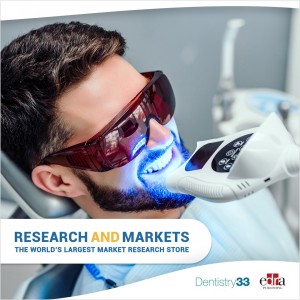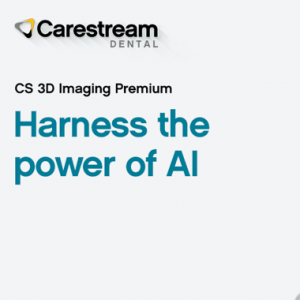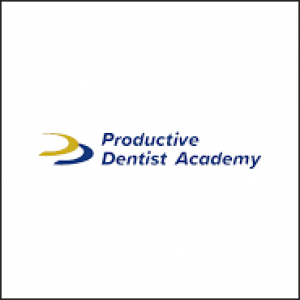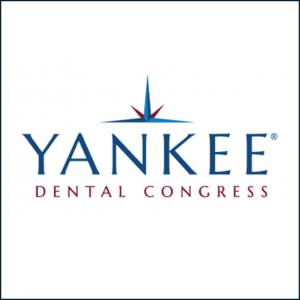
Why periodontitis may be the missing link in understanding the severity of SARS-CoV-2
By Caroline Holland
In a news article by Caroline Holland published Feb. 10 in the British Dental Journal, the reporter describes the work of Dr. Graham Lloyd-Jones, who has investigated the development of lung disease in COVID-19, In the article, Holland writes about how the radiologist attempted to answer why some people are so much more badly affected than others.
Society has moved on rapidly since we were all confined to our homes during lockdowns, waiting to resume dental treatments while worrying about vulnerable friends or relatives and hoping for effective vaccination to end it all. But there are still important lessons to learn.
Early in the pandemic, he began to study how SARS-CoV-2 damages the lungs and saw that the airways of affected patients were not inflamed, as they would be in conventional respiratory viral pneumonia, such as influenza. Instead, he saw a pattern of lung damage which would be expected in the context of blood clots forming in the small blood vessels at the edges of the lungs.
He said the term 'pulmonary vasculopathy' (disease of the lung blood vessels) is a better description than 'respiratory pneumonia'. He then hypothesized that SARS-CoV-2 could be passing into the lungs through an oral-vascular-pulmonary route - from the viral reservoir of the mouth, passing across damaged gums, into the blood and directly to the lung blood vessels. Lloyd-Jones was the first to question whether poor oral health could be instrumental to the development of severe COVID-19 via this anatomical pathway.
After teaming up with Iain Chapple, professor of periodontology and consultant in restorative dentistry, with whom he published his hypothesis, Lloyd-Jones began to champion an oral health quality improvement project in his hospital, Salisbury, to offer advice on best oral care for those with acute COVID-19.
According to the radiologist, it is no coincidence, in his view, that severe COVID-19 shares the same risk factors as periodontal disease, such as patient age, sex, diabetes, heart disease, obesity, kidney disease, ethnicity and even blood group.
Dentists undertake much more study of systemic diseases during their training than doctors do of dentistry. Unfortunately, this does not translate into a greater focus on whole body health among dentists.
A tweet from Lloyd-Jones in November 2022 challenged his medical colleagues to participate in a poll to determine how much time they spent studying the mouth:
"Time for honesty #Medtwitter, how much time did you spend during your degree learning about oral health?"
He found that 92% of respondents spent less than a day's training on dentistry and oral health throughout all their years of medical training. It did not surprise him. He vividly recalls the dissection classes he attended as a medical student. Close attention was dedicated to the brain, neck, chest, abdomen, and limbs, while the mouth was left pristine and untouched.
In February 2021, he first published his hypothesis about the potential for passage of SARS-CoV-2 from the mouth to the lungs via the blood on Radiology Masterclass. This hypothesis was further developed in collaboration with Chapple and published in the Journal of Oral Medicine and Dental Research.
His work on COVID-19 inspired his hospital, Salisbury, to introduce guidance relating to mouthcare specifically for patients with acute COVID-19. Dr Lloyd-Jones is also leading a hospital-wide quality improvement project to improve mouthcare for all patients.
"To this day, poor oral health and the oral systemic link are overlooked as potential mechanisms in the development of multiple systemic diseases," he said. "Important messages need to be learned by medical students, doctors of all specialties, health policy makers, and by those determining public health messages or patient-facing medical communications. We need to learn that gum disease and oral dysbiosis are killing us."
Lloyd-Jones called for medical researchers to ensure that poor oral health becomes a consideration in understanding the development of systemic diseases and encourages doctors to seek education from experts in oral medicine.
He has also called for collaboration at the highest level to gain an interdisciplinary understanding of how diseases develop, especially new diseases like COVID-19.
"Nowhere in the world is there a formal organization or a system for building an understanding of new diseases," he said. "This is something the whole of humanity is lacking. It is massively frustrating as it means that important messages are hidden in siloes of medical research and have been ignored by many investigating COVID-19. The most disconnected branch of medicine is dentistry, and, in my view, the mouth is where many of the answers about COVID-19 are to be found."
This article has been edited from the original version. Read the original news story on the journal's site.
Holland, C. "Why periodontitis may be the missing link in understanding the severity of SARS-CoV-2." Br Dent J. 234, 143–144 (2023). https://doi.org/10.1038/s41415-023-5542-1
 Related articles
Related articles
Digital Dentistry 17 June 2025
Clinical relevance of digital dentistry during COVID-19 outbreak: a scoped review
o perform a scoped literature review on advantages of digital workflows in dentistry that could be widely adopted to address safety issues raised during the coronavirus (COVID-19) pandemic.
Oral pathology 23 December 2024
Oral Pathology in COVID-19 and SARS-CoV-2 Infection—Molecular Aspects
This review article was designed to evaluate the existing evidence related to the molecular processes of SARS-CoV-2 infection in the oral cavity.
Oral Hygiene & Prevention 07 August 2024
Dental Patient Management in the Context of the COVID-19 Pandemic: Current Literature Mini-Review
Considering dental data gain associated with COVID-19 in the last few months of 2020, it is highly important to provide an assertive critical literature review with the categorization and...
News 19 September 2023
Dentists report insurance reimbursement rates decreased: ADA research
Dentists report that dental insurance reimbursement rates have decreased over a span of 12 months, according to the August Economic Outlook and Emerging Issues in Dentistry poll from the ADA Health...
News 15 September 2023
Procter & Gamble, Colgate, GSK drive strong growth in oral care market: report
The global oral care market has experienced substantial growth, with an impressive increase to $45 billion in 2023.
 Read more
Read more
Oral pathology 24 October 2025
Isolation and characterization of dental pulp stem cells from a supernumerary tooth
Dental pulp stem cells (DPSCs) were primarily derived from the pulp tissues of primary incisors and permanent third molar teeth, whereas no report to our knowledge has yet been documented on deriving...
Editorials 24 October 2025
From mentoring workshops to leadership insights, the last week’s IU School of Dentistry (IUSD) fall faculty conference and staff retreat brought faculty and staff together respectively for two days...
Products 24 October 2025
At the American Academy of Periodontology’s Annual Meeting, Carestream Dental continues to deliver what’s next in dentistry with the launch of CS 3D.
News 24 October 2025
As dental professionals prepare to wrap up 2025, many are setting ambitious goals for the year ahead, yet few have a clear, actionable plan to achieve them.
News 24 October 2025
The Yankee Dental Congress will take place from January 29, 2026, through January 31, 2026, at the Thomas M. Menino Convention & Exhibition Center in Boston.















